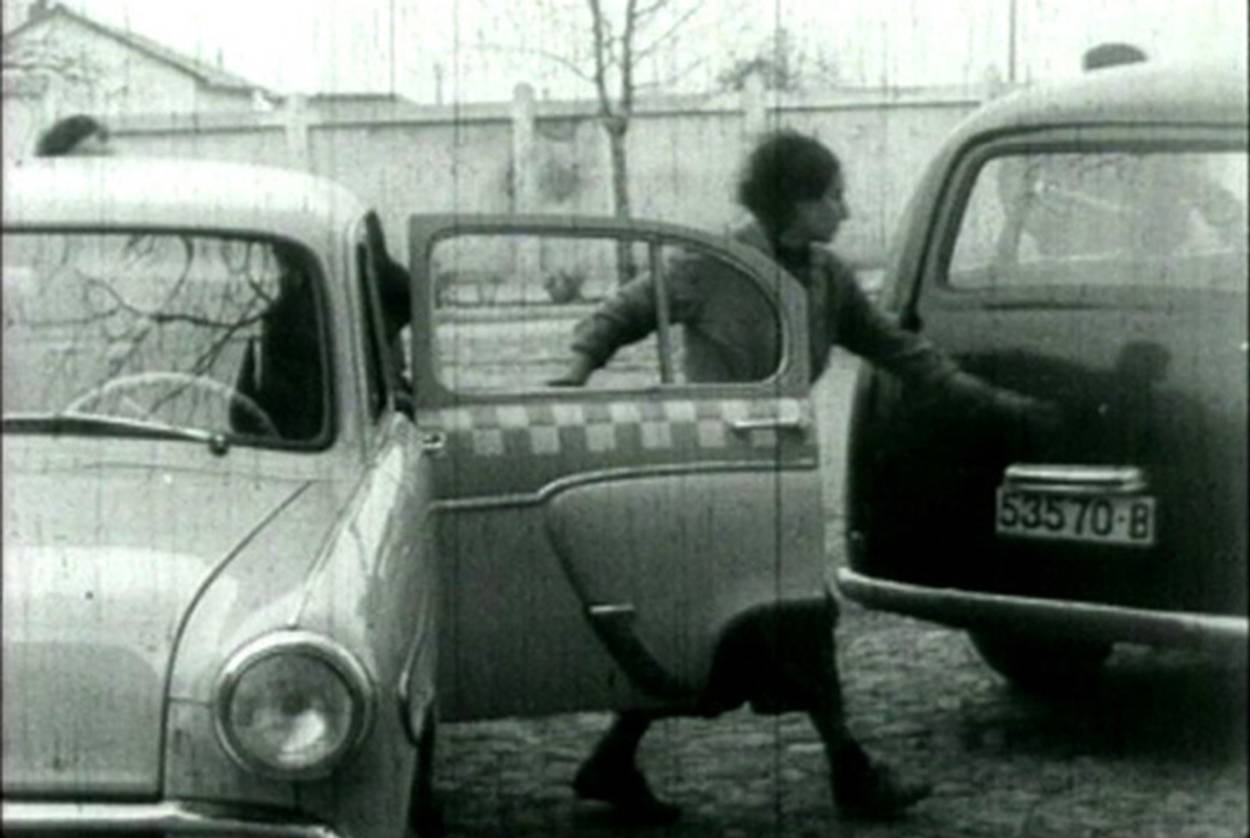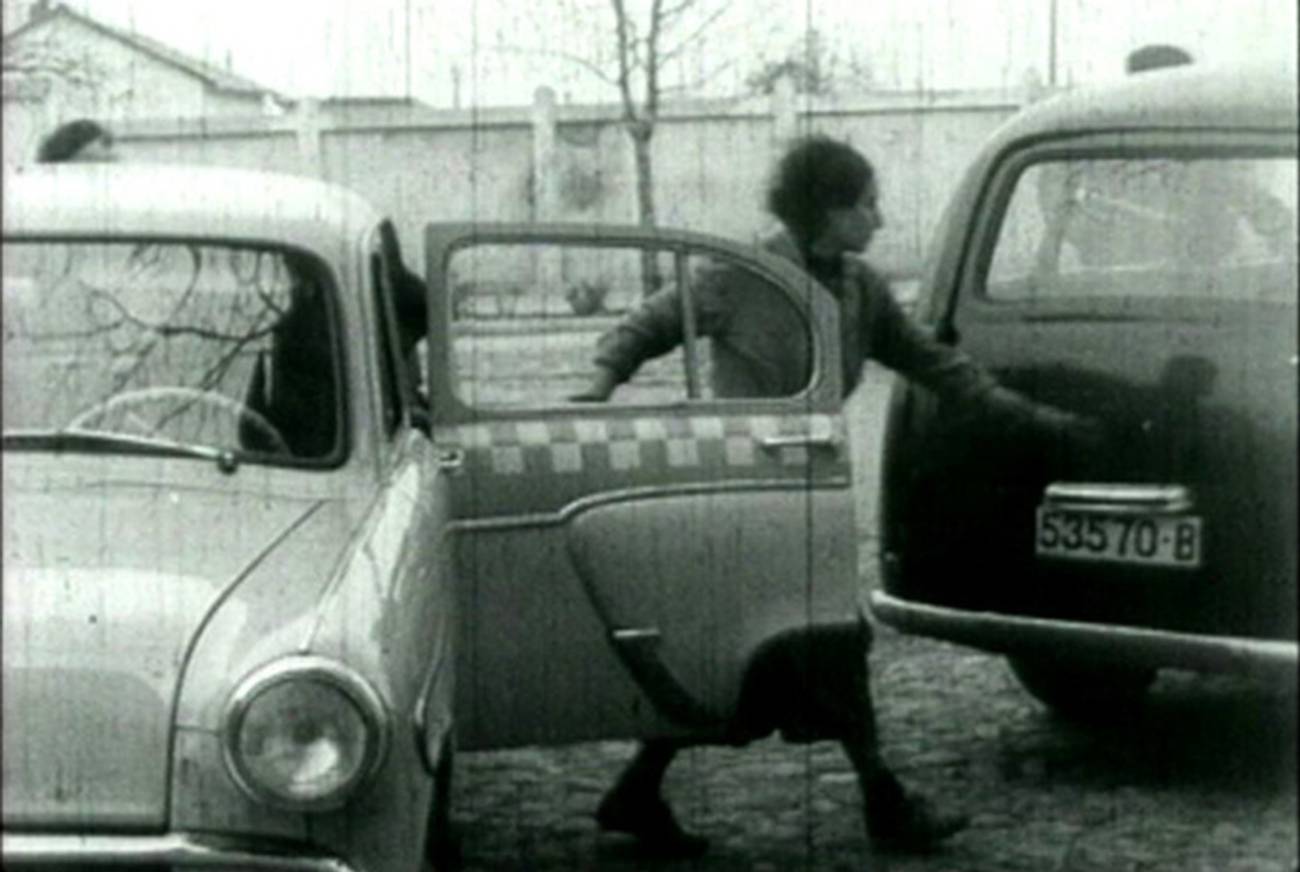The Jewish Gang That Pulled Off the Most Famous Bank Robbery in Communist History
A new Romanian film starring Vera Farmiga recreates a notorious incident with echoes in today’s European anti-Semitism




Nae Caranfil’s Closer to the Moon is a Romanian film that tells the story of the Eastern Bloc’s most famous bank heist. Carried out by six Jewish intellectuals in 1959, the robbery has since become one of the most heavily disputed incidents in that country’s communist past. The Romanian Communist Party (PCR), ascending to power on December 30, 1947 after the forced abdication of King Michael I, took upon itself the task of unburdening Romania from its long-standing history as an agrarian backwater. The 1950s under then-leader Gheorghe Gheorghiu-Dej brought with it massive industrialization initiatives that catalyzed the construction of thousands of factories and power plants.
Set against this backdrop, Caranfil’s film begins with a recreation of that famous heist: a spectacular Western-style stickup. A taxi swerves onto the scene. Sporting gas masks, the robbers put up a sign indicating filming was in progress. The stage is set, the “camera” rolling. Threatening the driver of a National Bank of Romania (NBR) van with semi-automatic weapons, the “actors” empty the vehicle of all its money. As they speed away, forgetting the “film in progress” sign, the group of citizens gathered on the street-corner applauds what they believe to be an action-packed movie shoot. Little do they know that what they just witnessed was the biggest bank robbery in Communist history.
Among these star-struck citizens, we meet Virgil, a young waiter at a nearby café, who soon becomes involved with a strange film production where he finds the same bandits, all Jews, are being forced—as punishment and to produce propaganda—to re-enact what he now learns was an actual theft. Virgil finds the criminals fascinating. Taking advantage of their absurd, Kafkaesque circumstance, all six seem to take their sentences with jovial indifference: on this prison “set,” they indulge in Hollywood histrionics as newfangled “actors.”
Behind their lighthearted nonchalance, however, is Caranfil’s deft portrayal of how the Jews of Romania were growing disillusioned with communism. Interwar membership rolls for the PCR reveals that as many as 30 percent of its members were not ethnic Romanians, but Hungarians, Bulgarians, and Jews. Ana Pauker (born Hannah Rabinsohn) was the unofficial leader of the PCR post-WWII and served as the foreign minister in the late 1940s and early ’50s. Yet if there was any hope left that the Romanian People’s Republic would be free of the divisive class and ethnic conflicts of its past, that dream died with the nationalistic party purges of the 1950s.
Following Stalin’s anti-Semitic purges, Gheorghiu-Dej sought permission from the Supreme Soviet to purge the party of “foreign” persons, including Pauker. She was arrested in 1953 after a carefully devised political witch-hunt, and was accused of supporting international Zionism and conducting espionage for the “enemy,” America. Fearing her reinstallation after Khrushchev’s ascension, Gheorghiu-Dej redirected his persecution campaign to focus on her “Stalinist excesses.” Pauker was forced to politically exile herself from the party in 1956.
Enter the Banda Ioanid. Alexandru Ioanid, Paul Ioanid, Igor Sevianu, Monica Sevianu, Saşa Muşat, and Haralambie Obedeanu were not only part of the Romanian-Jewish intelligentsia but also among the pioneers of the pre-1948 communist movement. All six were official party members at a time when party membership was less than 1,000. For the Ioanid Gang, as well as many other Jews in the Eastern Bloc, communism held the key to absolution: a society where their Jewish identity would finally be accepted. With the mass purges of the PCR, however, it is clear that they had been duped. A new Romania would be built, but only for Romanians. The group, whose members included journalists, a physicist, a history professor, and even a Securitate (Romania’s KGB) Colonel, was well aware of the political climate around them; they knew that Jews would remain, as they had for hundreds of years in the Kingdom of Romania, an “other.”
The Ioanid Gang’s daring raid was the stuff of films, but it happened in real life: On July 28, 1959, two of the members followed the NBR car in a taxi. Making its daily route to the local branches, the car approached the Giulesti bank. Mr. Gheorghe Ciuplea, a passenger in the NBR vehicle, states the taxi turned around next to the car and pulled up behind them. The man and woman in the taxi were then joined by three others. As one of the men approached the driver, Mr. Ciuplea noticed that he was wearing a mask and donning a Patriotic Guard’s uniform. Even though this man was threatening the driver with a machine gun, Mr. Ciuplea thought nothing of it. As National Day celebrations were approaching and given the choice of costume, he believed that someone was playing a joke. It wasn’t until he heard the back door open that he turned around, saw a gun pointed at him, and realized they were, indeed, being robbed.
In broad daylight, the gang managed to rob the National Bank of Romania, carrying away 1.6 million Romanian lei (the equivalent of about US$1 million today and the average salaries of about 2,000 Romanian workers, combined, at that time). Two months later, all six were arrested, given a show trial, and sentenced to death. The one exception was Monica Sevianu, whose sentence was commuted to life imprisonment because she was a mother. (She would later make Aliyah to Israel.) Prior to carrying out the sentences, however, in a particularly grotesque move, the group was made to re-enact on film how the alleged planning and robbery took place, with each member acting out his/her own role in the movie. (It has been suggested that the group agreed to participate in exchange for commuted sentences.)
In 1960, the government released the result of this forced filming under the title Reconstituirea (Reconstruction). It was pure propaganda. The members’ Jewish identities were emphasized exhaustively. Portrayed as gaudily decadent, they were shown enjoying a life of luxury and lavish spending that was simply inconceivable in Romania. The robbery was thus made to show nefarious Jews robbing the Romanian people. Like the Soviets, the Romanian government succeeded in cultivating the image of the Jew as a “rootless cosmopolitan,” the hated enemy of the proletariat and of Romania.
What the government failed to do, however, was include in its propaganda film a clear reason for why these individuals committed the crime. In the real-life trial of the gang, the prosecution charged that the underlying motive was to send funds to Zionist organizations to get Romanian Jews to Israel. That claim, however, was patently implausible, since it was impossible to trade Romanian lei into hard currency at the time. Why, then, would these people steal such an extraordinary amount of worthless money?
On top of these layers of confusion, then, comes Caranfil’s new film—more of a black comedy than a documentary—with its own answers. While conspiracy theories of government blackmail continue to circulate, Caranfil suggests that as Jews, the Ioanid Gang had been left adrift in a country and in a party where all forms of the identities they had embraced were now being systematically erased. Betrayed by their own ideology, they took it upon themselves to reveal the lie that communism would provide protection to all believers. Money was never the aim; the goal of the robbery was to expose the Ponzi scheme that was the communist state.
For Sevianu’s real family, though, the repercussions were significant, and nothing to be made light of. In yet another meta-plot twist in this tale, Monica Sevianu’s granddaughter, Irene Lusztig, became a filmmaker and artist in California. In 1998, at age 23, she shot a documentary that came out in 2002, also titled Reconstruction, in which she returns to Bucharest to reassemble the pieces of her family’s bizarre, dark history. The Romanian filmmaker Alexandru Solomon then told the story again in the 2004 documentary Marele Jaf Comunist (The Great Communist Robbery). Oddly—though perhaps not for a story about remakes of re-enactments, and about trying to restore the truth of an era plunged into lies and manipulation—neither Caranfil nor Solomon have ever acknowledged Lusztig’s film as a source, to her family’s frustration.
In fact, the question of whose story this is gets more muddled as remakes of the remakes are made: Sevianu’s daughter, Miki, when reached at her home in Cambridge, Mass., claimed that Solomon got the idea for his film “when [Lusztig] went to Romania to get access to the original footage. That is how he learned about it.” (Lusztig agreed.) When Sevianu’s other granddaughter, Tamar, saw Closer to the Moon, she was appalled by it, calling its humorous tone “disrespectful.” Indeed, at the premiere of Closer to the Moon at the Lincoln Center last November, the director, in attendance, said that the family wasn’t around to give an opinion on the film. This prompted Tamar, also in attendance, to speak out for herself and her family, in a room filled with film critics, movie stars, and, more predominantly, Romanians. (Caranfil and Solomon did not reply to repeated requests for comment.)
Closer to the Moon ends with each member facing a firing squad; interspersed between each slow-motion execution, Caranfil shows a group of young Romanian Jews celebrating their bar mitzvahs. With talises fluttering, they dance a frenzied freilich; a new chapter unfolds for them as the book closes on the prisoners.
Twenty-five years after the fall of the communist regime in 1989, only a few thousand Jews remain in Romania. Yet the same pressures and hatreds that drove the Ioanid gang to try to rip the mask off the communist regime remain present in today’s Romania. One need only watch the Christmas carol that was broadcast nationwide on Romanian state television at the end of last year, with lyrics such as “The kikes, damn kikes, Holy God would not leave the kike alive, neither in heaven nor on earth, only in the chimney as smoke, this is what the kike is good for, to make kike smoke through the chimney on the street.” Defending the anti-Semitic song, the network stated “it did not select the carol but only broadcast songs that were chosen and compiled by the Center for Preservation and Promotion of Traditional Culture.” If the story of the Ioanid Gang has taught us anything, it is that Romania must learn to stop writing its own citizens out of history if it ever hopes to prosper.
***
Like this article? Sign up for our Daily Digest to get Tablet Magazine’s new content in your inbox each morning.
Jonathan Levin is a freelance writer interested in the history of Eastern European Jews under Communist regimes.
Jonathan Levin is a freelance writer interested in the history of Eastern European Jews under Communist regimes.